What Does Writing for SEO Mean in 2026?
Aug 04, 2025
Written by Casey Bjorkdahl

Casey Bjorkdahl is one of the pioneering thought leaders in the SEO community. In 2010, Casey co-founded Vazoola after working for a Digital Marketing Agency for five years in New York City. Vazoola is now one of the fastest growing and most widely recognized SEO marketing firms in the country.
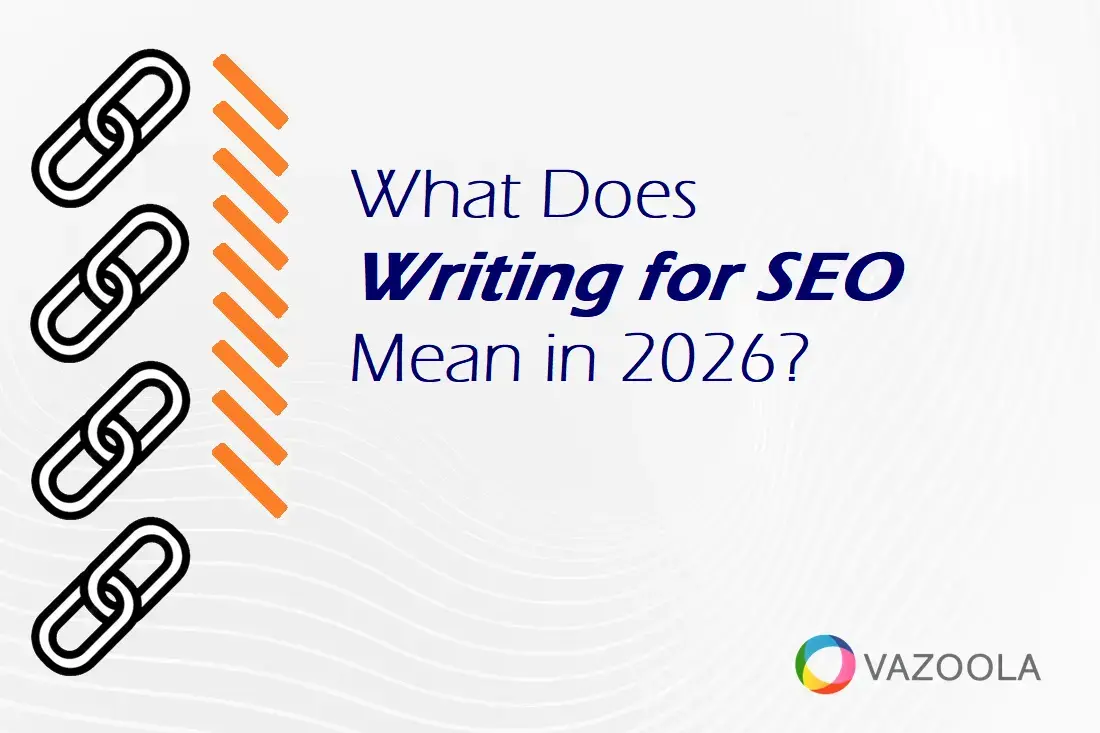
How do you create content that ranks in 2025? Start by writing for SEO.
Writing articles for search engines has evolved from simply adding keywords to building useful, clear, and engaging content that aligns with modern ranking factors.
Agencies and content creators need to understand how SEO writing supports traffic growth while meeting quality standards that search engines prioritize.
If you’re looking to gain a deeper understanding of these ranking factors, you should check out Vazoola's resource on SEO Ranking Factors.

Key Takeaways
-
SEO writing creates content that ranks while providing value.
-
Aligns with search intent and uses clear structure.
-
Uses keywords naturally while prioritizing audience needs.
-
Metadata, headings, and images support visibility.
-
Tools and expertise can refine SEO writing without losing quality.
Table of Contents

What Is SEO Writing?
SEO writing means crafting content that search engines can find and rank while delivering clear, helpful information.
For marketing managers, content creators, and business owners, it supports organic growth by attracting and engaging the right audience.
In essence, SEO article writing has shifted from keyword stuffing to prioritizing value and intent.
Google now rewards content that demonstrates expertise, experience, authoritativeness, and trustworthiness – EEAT. Vazoola's guide on Content Google Loves offers an even deeper look at this shift.
You can also get all sorts of SEO writing tips and tricks from our blog post checklist.
Indeed, SEO writing is one of the most important parts of running an effective search engine optimization campaign. It should be a strong part of your content marketing strategy.

How Do You Write SEO Articles?
Do you know how to write SEO articles?
Many believe writing for SEO is all about exact-match keywords.
Myth: SEO writing means you target the right keywords.
Truth: For better SEO results, create content that answers your audience's questions.
Keywords matter, but your audience matters more. Think about what questions they ask, what problems they face, and how your content can help. Strong SEO articles guide readers by matching content with search intent and using clear headings.
Make sure you use keywords naturally while focusing on clarity. Structure your content with headings, short paragraphs, and bullets when needed. This approach helps readers and signals to search engines that your article covers the topic well.
Modern SEO writing also includes using semantic keywords and a conversational tone. Focus on delivering clear, useful information rather than chasing search engines.
Articles that answer questions with depth and structure are sure to earn trust and improve rankings over time.

6 Key Elements of SEO Copywriting
Effective SEO copywriting relies on several foundational elements that work together to improve ranking, user engagement, and clarity. Each element supports your content’s visibility while ensuring it remains valuable to your audience.
1. Keyword Research
Keyword research forms the backbone of SEO strategy. It helps you discover what your audience is searching for and how you can meet those needs.
Tools like SEMrush and Ahrefs support effective keyword research, allowing you to identify opportunities while keeping your content natural and helpful. Take a look at Vazoola's Top Keyword Research Tips for more guidance.

Identify opportunities to target featured snippets, People Also Ask boxes, and image packs by analyzing SERP features for your keywords. Adjust your article structure and headers to match the snippet formats Google displays.
2. Understanding Search Intent
Your SEO content should align with why people search, not just what they search for. If a user wants a tutorial, your content should teach. If they want a product, your page should help them evaluate options clearly.
Aligning with intent improves relevance and ranking potential. Vazoola's search intent article offers some practical examples.
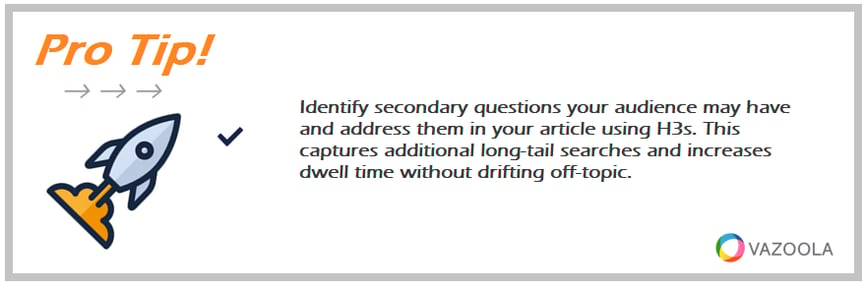
Identify secondary questions your audience may have and address them in your article using H3s. This captures additional long-tail searches and increases dwell time without drifting off-topic.
3. Prioritizing Quality Over Quantity
Publishing high-quality content matters more than publishing often. Content should be accurate, engaging, and well-researched to build authority in your niche and support EEAT signals.
Google's ranking signals and content Google loves emphasize the need for originality and expertise.
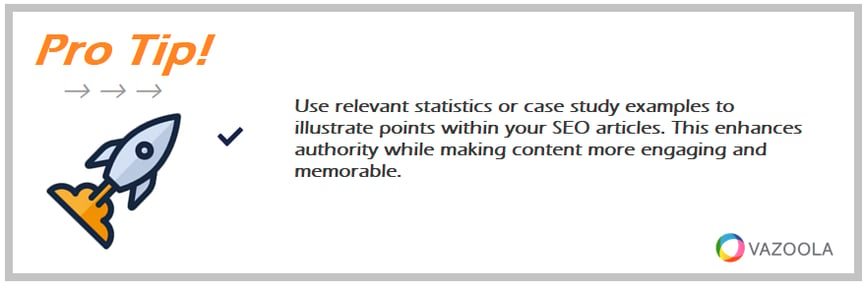
Use relevant statistics or case study examples to illustrate points within your SEO articles. This enhances authority while making content more engaging and memorable.
4. Optimizing Metadata
Metadata, including titles, descriptions, and URLs, helps search engines and users understand your content. Clear, direct metadata encourages clicks and signals relevance.
See these guides for practical steps:
Meanwhile, headings and subheads support structure and improve readability. See Yoast's explanation on the importance of headings.
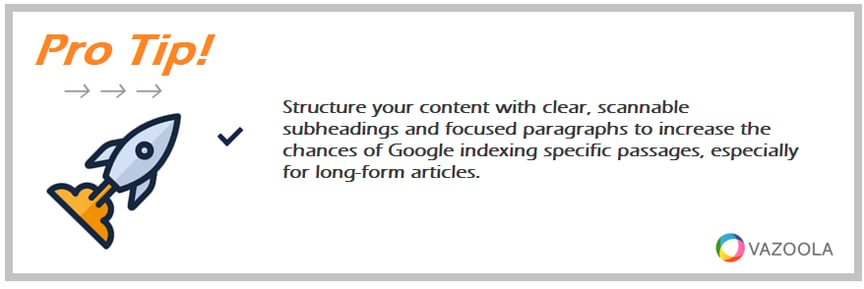
Structure your content with clear, scannable subheadings and focused paragraphs to increase the chances of Google indexing specific passages, especially for long-form articles.
5. Links
Internal links guide users through your website and help search engines understand your content structure. Earning reputable backlinks also strengthens authority and ranking potential. Ultimately, creating link-worthy content improves your visibility in a competitive space.
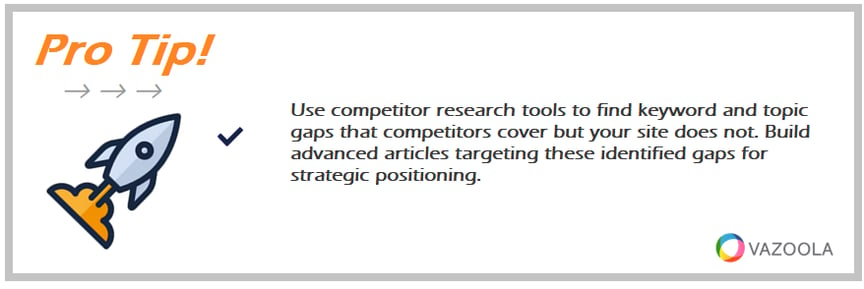
Use competitor research tools to find keyword and topic gaps that competitors cover but your site does not. Build advanced articles targeting these identified gaps for strategic positioning.
6. Images and Videos
Visuals improve user engagement and keep people on your page longer.
Optimizing images with descriptive alt text and ensuring fast load times can boost your SEO and enhance the user experience. Learn more from Vazoola's guide on image optimization.

Content Writing Tools for SEO
Tools like SEMrush, Clearscope, and Ahrefs help with keyword research and content mapping. They improve strategy while maintaining clarity and structure.
Vazoola's overview of Digital Marketing Tools provides a variety of recommended options.
Popular tools for SEO content writing include:
-
SEMrush: Keyword tracking, topic research, and competitive analysis.
-
Clearscope: Helps refine content for clarity and keyword coverage.
-
Ahrefs: Assists with backlink tracking and advanced keyword research.
-
Surfer SEO: Optimizes articles based on keyword frequency and structure.
-
Google Search Console: Monitors performance and indexing of your content.
-
Grammarly: Ensures clarity and correct grammar while maintaining tone.
Using these tools can streamline your process while ensuring content remains clear, useful, and optimized for search engines

Use tools like Google Trends, Glimpse, or Exploding Topics to identify rising search terms relevant to your niche. Create articles that target these before competitors saturate the topic.
Should You Hire an SEO Content Writer?
Now you know how to write SEO content.
High-quality writing paired with SEO knowledge drives results. Many agencies already have experienced writers who create original, clear content before using SEO-trained editors to refine it for search visibility.
AI-generated content can support workflows, but human insight remains vital for context, originality, and trust. For considerations on using AI, see Vazoola's guide on AI-generated content for SEO.
Creating articles that rank requires planning, quality, and clear execution. That’s why SEO writing remains a cornerstone of effective digital strategy for agencies, creators, and business owners seeking long-term growth.


